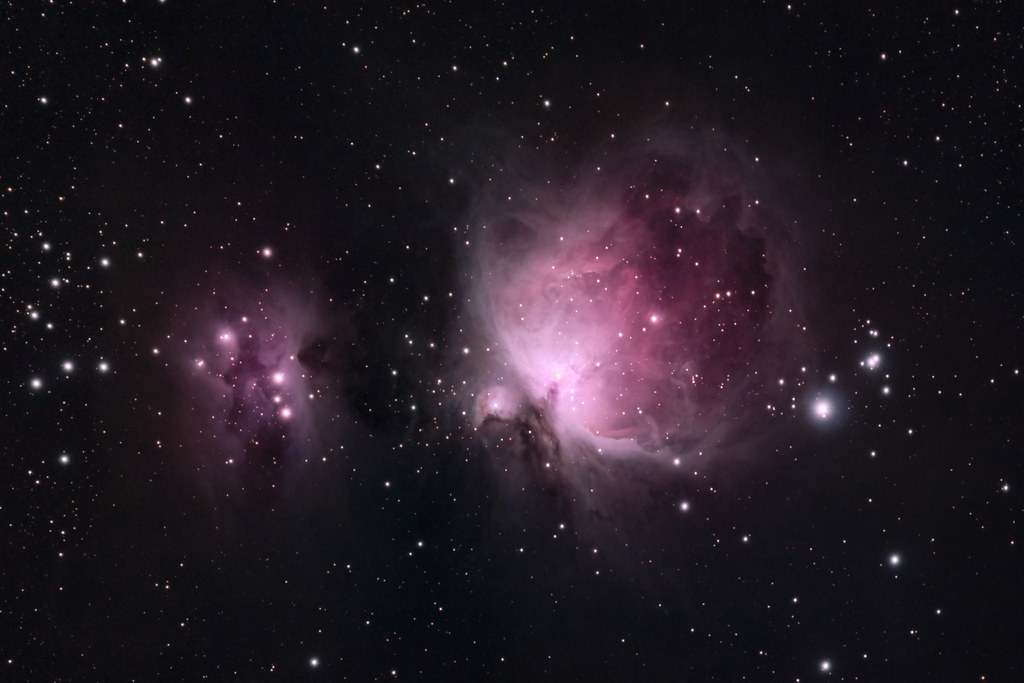- Messages
- 1,868
- Name
- Joel
- Edit My Images
- No
The Orion Nebula (also known as Messier 42, M42, or NGC 1976) is a diffuse nebula situated in the Milky Way, being south of Orion's Belt in the constellation of Orion. It is one of the brightest nebulae, and is visible to the naked eye in the night sky. M42 is located at a distance of 1,344 ± 20 light years and is the closest region of massive star formation to Earth. The M42 nebula is estimated to be 24 light years across. It has a mass of about 2,000 times that of the Sun. Older texts frequently refer to the Orion Nebula as the Great Nebula in Orion or the Great Orion Nebula.
Image acquisition details:
Camera: Canon 80D
Mount: HEQ5 Pro Rowan Belt Modded
Telescope: William Optics ZenithStar 73
APT Software using for image capture
Stacked in DeepSkyStacker and Processed in Adobe Photoshop and Lightroom
3 hours and 45 minutes worth of 60 second sub frames
50 Bias frames
30 Flat frames
No Dark frames
No Light Pollution filter
Bortle 6 skies
 The Great Orion (M42) and Running Man (M43) Nebula by Joel Spencer, on Flickr
The Great Orion (M42) and Running Man (M43) Nebula by Joel Spencer, on Flickr
Image acquisition details:
Camera: Canon 80D
Mount: HEQ5 Pro Rowan Belt Modded
Telescope: William Optics ZenithStar 73
APT Software using for image capture
Stacked in DeepSkyStacker and Processed in Adobe Photoshop and Lightroom
3 hours and 45 minutes worth of 60 second sub frames
50 Bias frames
30 Flat frames
No Dark frames
No Light Pollution filter
Bortle 6 skies
 The Great Orion (M42) and Running Man (M43) Nebula by Joel Spencer, on Flickr
The Great Orion (M42) and Running Man (M43) Nebula by Joel Spencer, on Flickr
